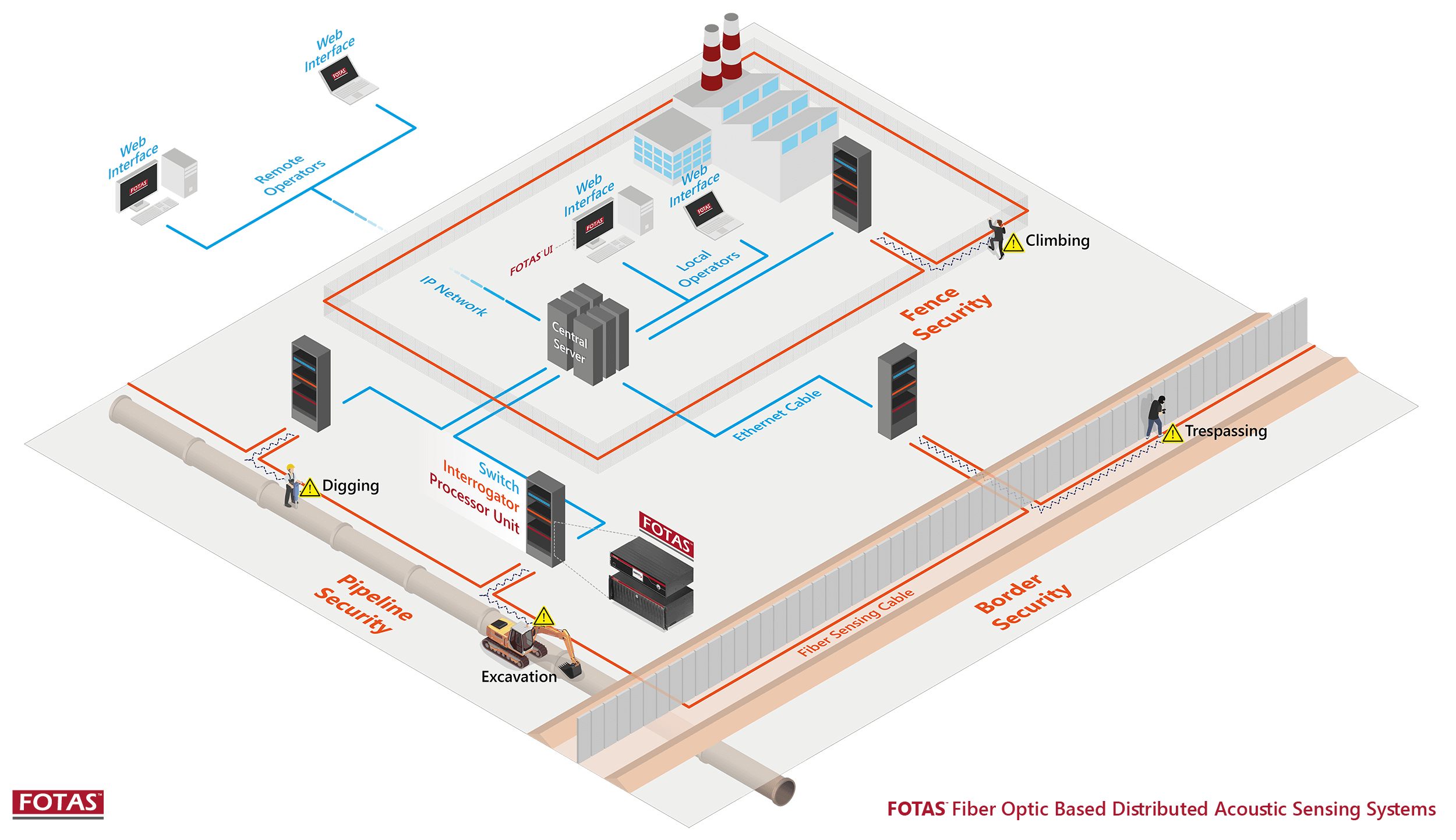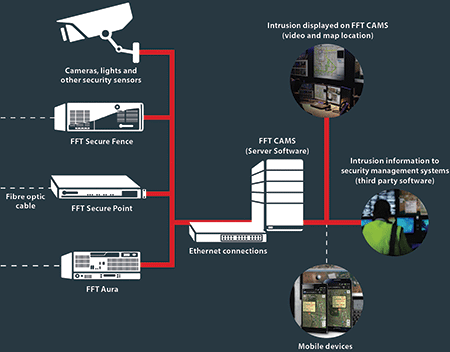The Role of Fiber Security in Enhancing Your Cyber and Physical Security Network
The Role of Fiber Security in Enhancing Your Cyber and Physical Security Network
Blog Article
Why Fiber Optic Security Systems Are the Future of Security
The change to fiber optic protection systems marks a substantial improvement in the realm of security, driven by their exceptional data transmission abilities and durability to exterior interferences. These systems not just assist in faster and a lot more trustworthy interaction yet likewise provide a cost-effective solution with reduced upkeep needs. As the landscape of safety advances together with arising technologies such as AI and IoT, the possibility for fiber optics to boost and redefine safety infrastructures becomes progressively noticeable. The implications of these developments raise essential inquiries about the future of safety and security actions and their effectiveness in an ever-changing environment.
Benefits of Fiber Optic Systems
Among the main benefits of fiber optic systems is their exceptional data transfer capability, which promotes the transmission of huge volumes of data over long distances without significant loss. This characteristic is especially helpful for safety applications that call for the continual surveillance and transfer of high-definition video feeds, sensor information, and other vital details. Optical fiber can suit the expanding needs of modern-day protection systems, making certain that data stays undamaged and reliable.
In addition, fiber optic cables are much less prone to electromagnetic interference, which can be a significant concern in settings with numerous digital tools. This resistance improves the integrity of the data being transferred, thereby reducing the threat of information violations or system failures. Furthermore, fiber optic systems are naturally much more safe than typical copper cable televisions, as touching right into a fiber optic line without discovery is exceptionally difficult.
The longevity of fiber optic cables also adds to their charm. They are resistant to environmental elements such as dampness and temperature level fluctuations, lowering upkeep costs and boosting system long life. On the whole, these benefits placement fiber optic systems as a durable and effective choice for contemporary security infrastructures, making sure trustworthy and safe information transmission.
Enhanced Information Transmission Rate

The capability to transmit vast quantities of data promptly assists in the smooth integration of high-definition video clip feeds and advanced analytics. Protection systems can currently refine and assess info in real-time, boosting action times and situational recognition. Additionally, fiber optic links sustain longer transmission distances without deterioration of signal quality, making them perfect for extensive safety and security networks.
The boosted speed of fiber optic systems not only improves the efficiency of safety procedures however additionally reduces latency. This is especially vital in vital scenarios where timely decision-making can prevent security breaches or alleviate prospective threats. As organizations remain to focus on security and efficiency, the demand for rapid and trusted information transmission will most certainly strengthen fiber optic systems as a foundation of modern security infrastructure.
Resistance to Interference
Fiber optic protection systems consistently show outstanding resistance to electromagnetic interference, an essential advantage in settings vulnerable to digital noise. Unlike typical copper cords, which can be negatively affected by magnetic fields, radio regularity interference, and other types of electrical disruption, fiber optic cable televisions utilize light to send data. This integral building makes sure that the signals continue to be clear and unaltered, regardless of bordering digital task.
Making use of glass or plastic fibers in fiber optic modern technology creates an obstacle versus disturbance, enabling for trusted data transmission also in challenging see scenarios such as commercial facilities, urban areas with high electronic traffic, or locations near radio towers. This characteristic considerably reduces the possibility of signal degradation or loss, making fiber optic systems especially suitable for security applications where integrity and accuracy of data are paramount.
In addition, this resistance to disturbance improves the general performance and reliability of safety and security systems, making certain that tracking and alert systems work perfectly. In a globe where protection is progressively threatened by innovative modern technologies, the strength of fiber optic systems sticks out as a crucial function, reinforcing their condition as an important component of modern protection infrastructure.
Cost-Effectiveness Over Time
Substantial price savings can be accomplished over time with the application of fiber optic security systems. While the initial investment might appear higher contrasted to standard copper-based systems, the long-term economic benefits become apparent with minimized functional and upkeep expenses (fiber security). Fiber optic cords are inherently more resilient and less at risk to environmental variables, which converts to reduce replacement and fixing costs over their life-span
In addition, fiber optic systems require much less power to run, which better reduces power prices. Boosted information transmission capacities allow for less repeaters and amplifiers, reducing tools financial investment and streamlining installment processes. The scalability of these systems likewise contributes to cost-effectiveness, as organizations can broaden their safety infrastructure without incurring substantial additional expenses.
One more element to consider is the increased performance in tracking and reaction capabilities that optical fiber offer. Boosted real-time information transmission can bring about quicker case action times, possibly mitigating losses and responsibilities related to safety and security violations. Altogether, the Our site lasting advantages of fiber optic security systems not just warrant the initial expenditure but additionally place them as a financially sensible choice for organizations looking for robust protection remedies.

Future Advancements in Safety
Progressing modern technologies are established to transform security systems, integrating expert system (AI) and artificial intelligence to enhance risk detection and action capabilities. These technologies will allow safety systems to assess substantial amounts of information in real-time, determining patterns and anomalies that show possible hazards. This positive method will certainly allow quicker decision-making and extra reliable case feedbacks.
Additionally, the unification of the Internet of Points (IoT) is leading the method for interconnected security tools, supplying thorough surveillance and tracking. Smart sensors can communicate details regarding environmental changes, while automated informs can inform protection workers right away of dubious tasks.
Additionally, the advancement of biometric innovations will further boost safety and security systems. Facial recognition, fingerprint scanning, and retina identification are coming to be much more innovative, providing layers of authentication that are tough to bypass.
Verdict
Finally, fiber optic security systems stand for a considerable improvement in protection modern technology, using unrivaled information transmission rate, Learn More resistance to electromagnetic interference, and long-lasting cost-effectiveness. As the need for sophisticated safety and security options remains to grow, the assimilation of optical fiber with emerging innovations such as AI, IoT, and biometrics will certainly better enhance protection frameworks (fiber security). The combination of these developments will guarantee an extra safe and secure and responsive atmosphere, solidifying optical fiber as a cornerstone of future safety systems
Report this page